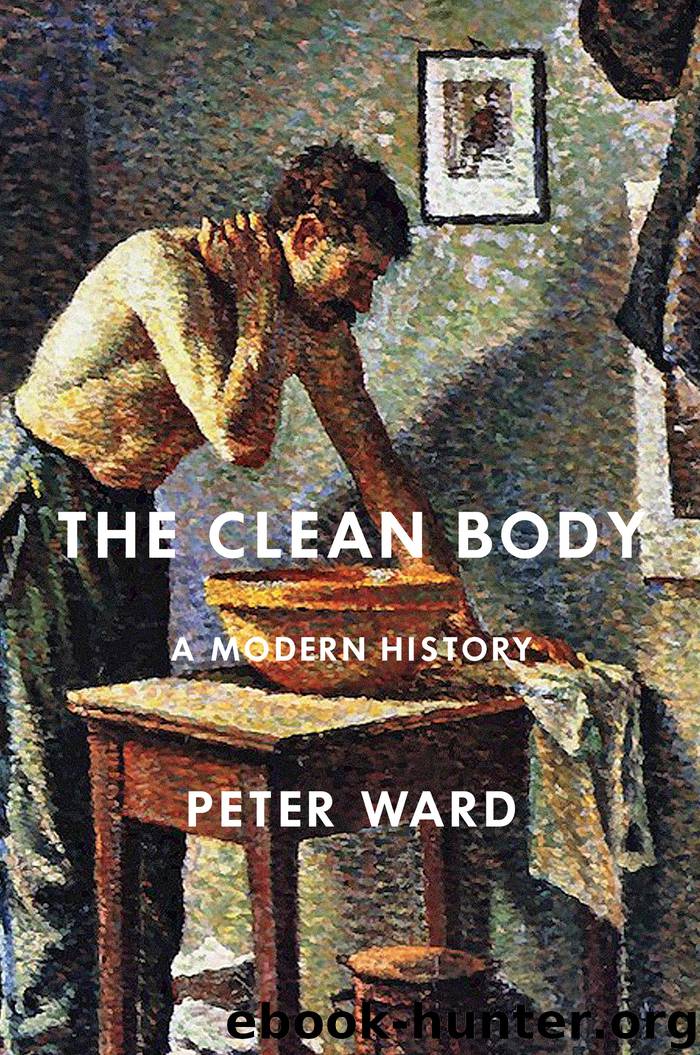The Clean Body by Peter Ward

Author:Peter Ward
Language: eng
Format: epub
Publisher: MQUP
Published: 2019-02-26T16:00:00+00:00
PART THREE
Cleanliness as Commodity
One of the nineteenth-century West’s greatest legacies to the twentieth was a technology of water management. It supplied great cities and small dwellings alike, making fresh water more readily available – and foul water more easily disposable – than at any point since Roman times. Expanding these systems was still a work in progress when the Victorian era came to an end, and at that time its blessings were far from universally available. But within half a century most residents of the Western world could claim them as an entitlement and those who couldn’t soon would. The major building block of modern personal hygiene was then in place. Others took form during the same years as well. Once enjoyed only by the well-to-do, the bathroom gradually extended its domain as the century progressed; by the 1980s the great majority of Western dwellings included at least one and often two or more. Meanwhile hot running water had become so commonplace that it ceased to be cause for comment. Together these changes created the basic infrastructure of modern body care, found everywhere in the late-twentieth-century home.
From the nineteenth century the twentieth also inherited an ideology of personal cleanliness. The lessons of the educators and the messages of the physicians became platitudes as the new century progressed. They underscored the need to avoid harmful germs by developing healthy habits. Many public institutions, especially those that cared for children, preached the gospel of cleanliness as a matter of course. But voices from another quarter joined them, and they proved still more pervasive – and persuasive – over time. These were the claims of the makers of products: the soaps, the detergents, and the beauty aids that commercialized personal hygiene as the century progressed. Advertising came to dominate the discourse on cleanliness, transforming it from a habit into a commodity. Rather than representing it as a worthy end in itself, publicity emphasized its central place in an individual’s social relationships, its importance to self-presentation and social acceptance, its role in making oneself attractive to others. Success in public and private life came not from being clean per se but from consuming goods that represented the individual as clean, sometimes even masking its absence in the process.
One of the greatest of these commercial campaigns involved one of life’s most mundane tasks: the laundry. Over the course of the twentieth century household laundry chores were mechanized and automated, their physical burdens eased, their demands on a housewife’s time greatly reduced. An onerous duty that took a very full workday at the beginning of the century, the family wash had become a light and simple task by its end. These changes unfolded at a time when shifting fashions, rising living standards, and new forms of work greatly increased the consumption of clothing. In particular, the steady growth of the service sector fostered a demand for larger wardrobes, more frequently changed clothes, and – inevitably – more clothing to be washed. The makers of automatic washing
Download
This site does not store any files on its server. We only index and link to content provided by other sites. Please contact the content providers to delete copyright contents if any and email us, we'll remove relevant links or contents immediately.
Nudge - Improving Decisions about Health, Wealth, and Happiness by Thaler Sunstein(6669)
iGen by Jean M. Twenge(4717)
The Fire Next Time by James Baldwin(4376)
Adulting by Kelly Williams Brown(3705)
The Sports Rules Book by Human Kinetics(3617)
The Hacking of the American Mind by Robert H. Lustig(3603)
The Ethical Slut by Janet W. Hardy(3535)
Captivate by Vanessa Van Edwards(3320)
Mummy Knew by Lisa James(3181)
In a Sunburned Country by Bill Bryson(2965)
The Worm at the Core by Sheldon Solomon(2947)
Ants Among Elephants by Sujatha Gidla(2938)
Suicide: A Study in Sociology by Emile Durkheim(2623)
The Slow Fix: Solve Problems, Work Smarter, and Live Better In a World Addicted to Speed by Carl Honore(2587)
Humans of New York by Brandon Stanton(2389)
Handbook of Forensic Sociology and Psychology by Stephen J. Morewitz & Mark L. Goldstein(2385)
Blackwell Companion to Sociology, The by Judith R. Blau(2324)
The Happy Hooker by Xaviera Hollander(2285)
Outliers by Malcolm Gladwell(2272)
